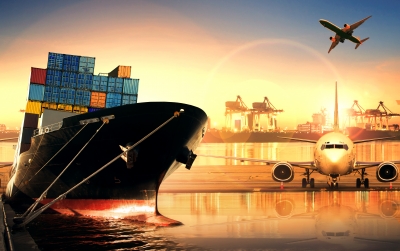Scaling logistics in the Philippines is not simply about adopting the latest digital tools. It is about creating a connected ecosystem where stakeholders—ports, customs authorities, freight forwarders, and distribution networks—operate on a common digital foundation. For a country made up of over 7,000 islands, this connectedness is not just beneficial, it is fundamental to building resilience and competitiveness in both domestic and international trade.
The Archipelago Advantage and Challenge
The Philippines has a unique geographical character. Its position in Southeast Asia makes it a natural hub for trade, with strong maritime and air connectivity to global routes. At the same time, its archipelagic structure creates complexities in moving goods between islands. Efficient supply chains here are only possible when visibility and collaboration extend beyond individual players, and when data flows as seamlessly as cargo itself.
This is why scaling logistics in the Philippines cannot be achieved through fragmented solutions. The future lies in aligning the nation’s logistics ecosystem digitally—bridging ports, customs, inland transport, and warehousing under unified platforms.
From Individual Digitization to Systemic Integration
Over the past few years, there has been impressive progress in digitization at individual company levels—forwarders adopting digital freight solutions, ports upgrading systems, and customs introducing automation. Yet, the real gains will be realized when these systems connect with one another.
A logistics provider may have end-to-end visibility on its own operations, but without integration with customs clearance, port handling, or last-mile distribution, delays and inefficiencies remain inevitable. Ecosystem-level integration ensures that one stakeholder’s data becomes another’s input in real time—minimizing redundancies and maximizing efficiency across the chain.
Aligning with National and Cross-Border Trade Growth
The Philippines is strengthening its role in both intra-ASEAN trade and global exports. Scaling to meet this growth will require logistics that can handle rising cargo volumes while maintaining speed, compliance, and cost-efficiency. A connected ecosystem supports this by:
- Reducing Clearance Bottlenecks – Integrating customs systems with forwarder and port platforms accelerates cargo release and improves compliance.
- Enabling Inter-Island Resilience – With digital coordination between ports, shipping lines, and inland carriers, disruptions like weather or congestion can be managed more proactively.
- Facilitating Cross-Border Efficiency – Trade with ASEAN neighbors and global partners becomes smoother when systems across borders are interoperable.
By prioritizing digital alignment, the Philippines positions itself not only as a trade hub but also as a leader in supply chain agility.
Technology as the Enabler, Ecosystem as the Driver
Technology—AI, cloud platforms, blockchain, IoT—are powerful enablers. But their real impact is felt only when adopted across the ecosystem. For example, predictive analytics can anticipate port congestion, but it is useful only if shipping lines, ports, and logistics companies share and act on the same data. Similarly, digital documentation speeds up customs processes only when platforms on both sides of a transaction are connected.
The focus, therefore, should not be limited to individual tech adoption but on building interoperability and trust across the logistics ecosystem.
Building the Future of Logistics in the Philippines
Scaling logistics in the Philippines is about more than handling higher volumes—it is about ensuring supply chains remain resilient, transparent, and cost-effective in the long term. The path forward lies in collaboration, where stakeholders view themselves not as isolated players but as part of a shared, digitally connected network.
By starting with ecosystem integration today, the Philippines can set the stage for logistics that scales in tandem with its growing economy and strengthens its role in global trade.
PREVIOUS COLUMN: How Unified Platforms Are Revolutionizing Logistics in the Philippines






